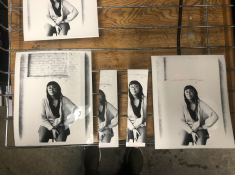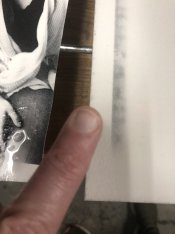So I had to make a recent switch of darkrooms due to all the shut downs. And I'm having quite a bit of trouble in my new space. And I'm working with so many new variables I'm not sure how to diagnose the issues I'm having. Any feedback is appreciated.
Paper: Ilford Art 300, 8x10
Developer: Arista liquid
Stop: Arista
Fix: Arista
Dev. Time: 3 min
So I've printed with this paper before in my regular lab with Dektol developer with no issue. Tones come out smooth and reliable (and with paper from this same box).
But the prints I was making today feel "blue-ish" or "ink-y." And I'm seeing some of that ink-y-ness around the edges of the easel framed print. And this paper naturally has a subtle warm tone to it.
Any ideas?
Thanks!
Paper: Ilford Art 300, 8x10
Developer: Arista liquid
Stop: Arista
Fix: Arista
Dev. Time: 3 min
So I've printed with this paper before in my regular lab with Dektol developer with no issue. Tones come out smooth and reliable (and with paper from this same box).
But the prints I was making today feel "blue-ish" or "ink-y." And I'm seeing some of that ink-y-ness around the edges of the easel framed print. And this paper naturally has a subtle warm tone to it.
Any ideas?
Thanks!







